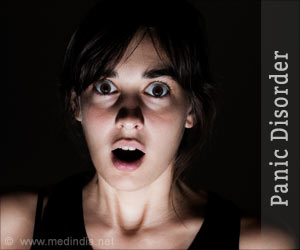Panic Disorder Calculator
Introduction
Sweaty hands, racing hearts, and butterflies in your stomach before the big presentation–we’ve all been there. But when the occasional butterflies morph into uninvited guests that show up at random times, it’s a sign that you might be suffering from panic disorder.
Panic disorder is a mental condition characterized by recurrent, unpredictable panic attacks, typically accompanied by a persistent worry about future attacks and a change of behavior to avoid them. If you think you may be suffering from panic disorder, use our panic disorder calculator to determine if you have panic disorder.
Source: Panic Disorder Screener (PADIS)(
1✔ ✔Trusted Source
Panic Disorder Screener (PADIS)
Go to source)

Causes of Panic Attack
The first key step to understanding this condition is to get familiar with the causes, which can be inherited or acquired over time. For example, if a first-degree relative of yours suffers from panic disorder, you’re 43% likely to inherit it. Additionally, you can also develop panic disorder if you've gone through a very traumatic or stressful experience, the most common example is the loss of a loved one.
Preventive Measures
However, you don't have to live like this your entire life. There are multiple measures you can take to minimize the frequency of these episodes, possibly reducing them to zero. Below is a list of preventive measures you can implement in your day-to-day life(
2✔ ✔Trusted Source
Panic attacks and panic disorder
Go to source):
- Eat a balanced diet and avoid eating foods that you don’t like – they can cause anxiety.
- Avoid smoking and caffeine – they can increase anxiety levels
- While alcohol and drugs may act as temporary calming agents, they don’t work well in the long run – they mess with sleep patterns and emotional balance.
- Attempt CBT (Cognitive Behavioral Therapy), which involves turning your negative thoughts into positive ones.
- Exercise regularly – it reduces stress
- Attempt breathing exercises – they ease anxiety.
FAQ:
1. Which doctor should I consult for panic attack?
You can consult a psychologist or psychiatrist.
2. What is the difference between panic disorder and anxiety?
Unlike anxiety, panic attacks have no clear triggers and may occur unexpectedly.
3. How long do panic attacks typically last?
Typically, they last for only a few minutes.
4. Can you die from a panic attack?
While the symptoms of panic attacks seem like the symptoms of heart attacks, panic attacks are not deadly.
5. How common is panic disorder?
Panic disorder affects about 2-3% of the population, more commonly present in women than men.
6. At what age does panic disorder usually start?
While there is no fixed age, it starts between ages 20-30 for most patients.






